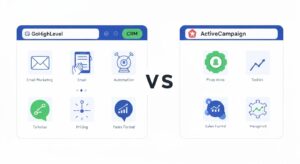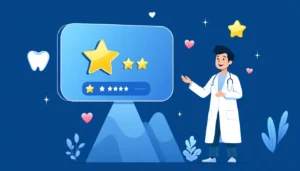Onboarding Clients with CRM: Setting the Stage for Success

The first meeting with a client sets the tone for the rest of the relationship. When clients feel confident in their choice to work with a firm, hiring is quick, organized, and easy to understand. But if the process isn’t planned or isn’t constant, not even the best marketing plan can bring back that trust. A lot of companies don’t realize how important this early stage is for keeping clients, getting recommendations, and doing well overall.
The structure agencies need to make each new partnership feel professional and easy is provided by a well-designed CRM client onboarding process. Agencies can make good first impressions that last by moving away from a lot of separate human steps and toward a systemized framework.
Turning First Impressions Into Lasting Relationships
When a client signs with an agency, the first thing they do is review their choice to work with that agency. Question marks appear when training seems hasty or thrown together on the spot. On the other hand, clients quickly know they’re in good hands when everything is planned, clear, and honest.
When firms use a CRM to guide hiring, they can set and repeat the steps that build strong relationships. Automatically, tasks are given out, due dates are set, and information moves easily between teams. The CRM is the backbone of the process and makes sure nothing is missed. This way, people don’t have to remember each step.
This amount of order makes things seem trustworthy. Clients know exactly what’s going on and when, and the business shows from the start that it works accurately.
Aligning Internal Teams
People aren’t the only ones who go through onboarding. A lot of people in the company need to work together to make sure everything goes well. Account managers need to keep the client excited and make sure that things run smoothly at the start. Sales, on the other hand, needs to pass on important information.
People who hire people by hand lose some information in the process. Goals, standards, and special needs can be hard to remember, which can lead to confusion and delays. A well-run CRM system keeps all the data in one place and makes it simple for teams to share data with each other, so this can’t happen.
Internal balance gets a lot better because of this. Everybody can see what’s going on and know what they need to do. Everyone will feel less stressed, and the client will have a better experience overall.
Building Trust Through Transparency
A well-planned training process can help build trust, which is one of the best things that can happen. People who hire pros want to know that they have a clear plan. They will trust the agency more if they can see that the hire process is well-trained and going as planned.
It’s important to have an open and honest conversation about this. Clients feel like they’re part of the team without the team having to reach out to them all the time. Times are clear, information is easy to find, and there are changes every day, so this is possible. By adding these parts to the CRM, businesses make sure that information moves smoothly and that everyone is up to date.
Creating Room for Strategy
Teams that don’t plan their training spend more time putting out fires than getting ready for the future. Once they have a plan, things don’t need to be fixed all the time. For now, they can just plan things and meet new people.
Things won’t change for a long time. You don’t have to fix problems as they come up. Instead, they can plan for future projects, look for quick wins, and make sure their method fits each client’s needs. It’s less about the details when you hire people and more about getting things going.
Conclusion
In the first few days, you can decide if you want to be friends with someone or not. Agencies always make sure that their clients have a smooth, open, and professional experience by using a careful CRM client onboarding process. When businesses put all of their data in one place, match internal teams, and make sure that key steps are always taken the same way, they build trust and long-term growth right from the start.
It makes the human touch better, not worse. Take care of the business side first. That way, teams can know what the client wants and give value right away. It’s easier for a business to grow if it hires good people and keeps them around for longer.




